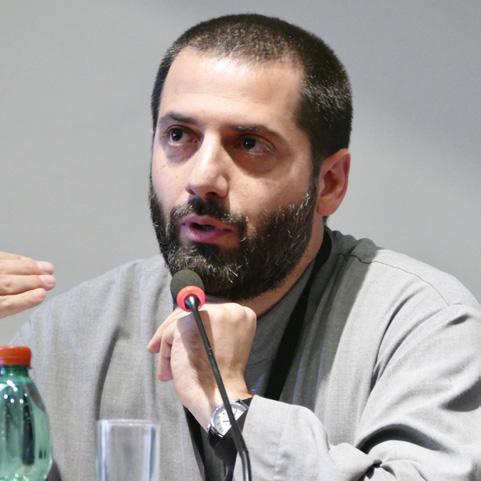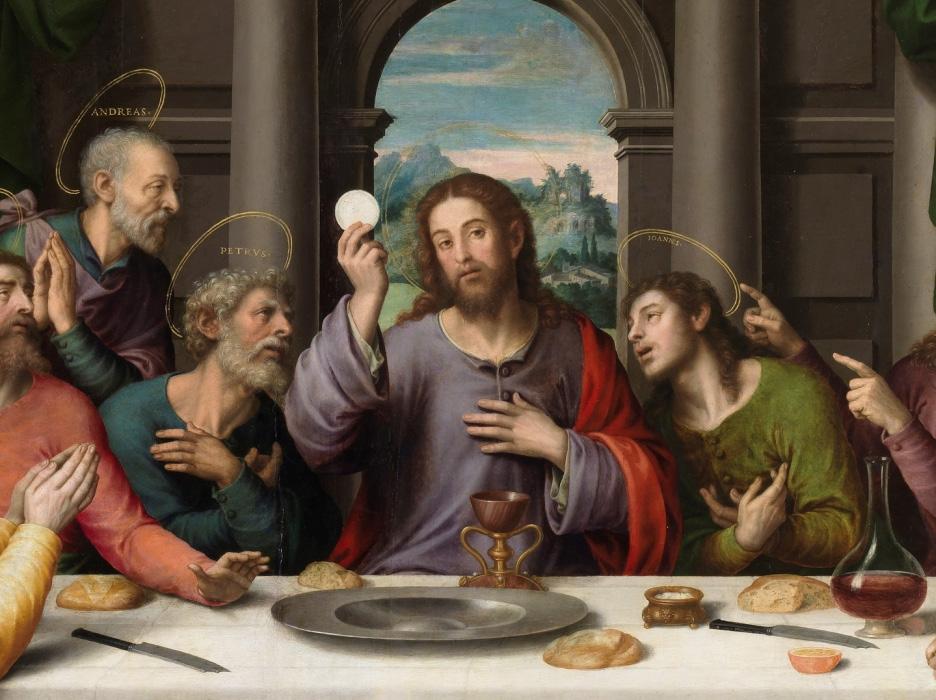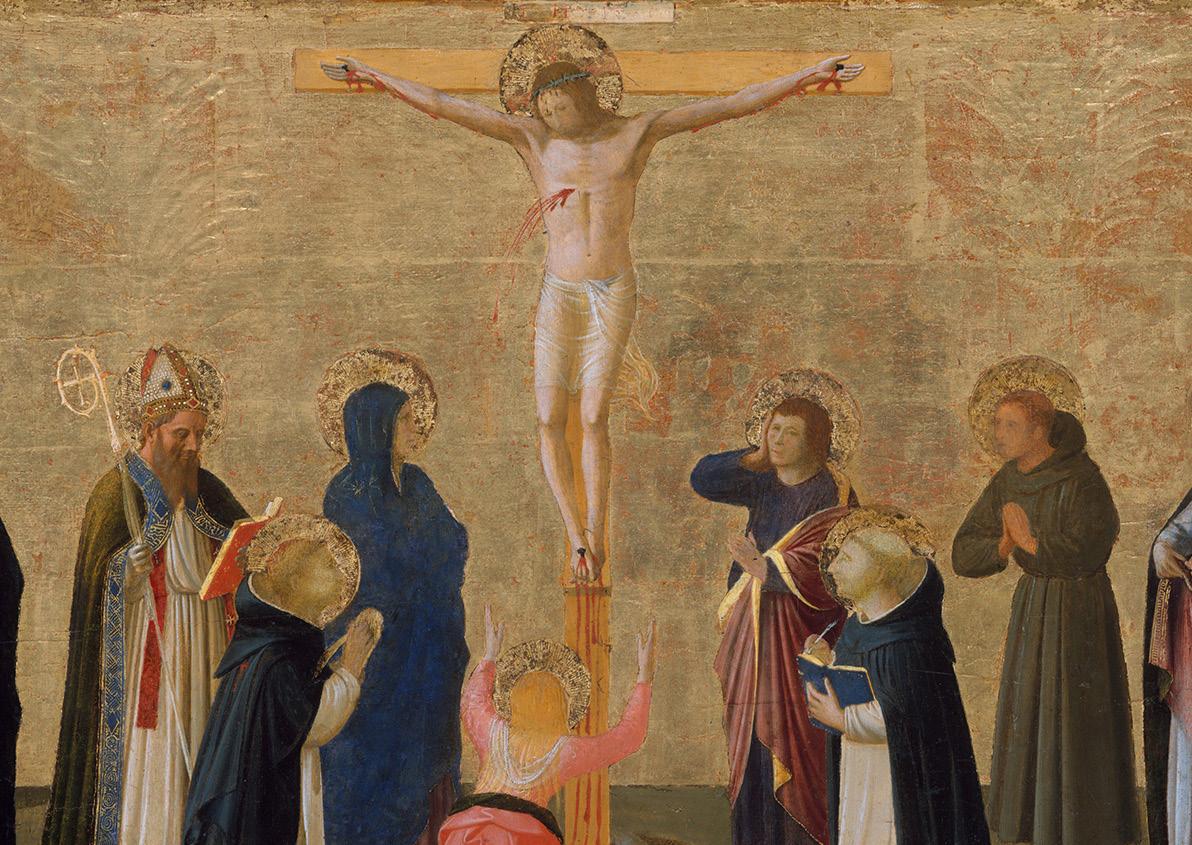
13 minute read
Theological reasons for receiving Holy Communion on the tongue
THEOLOGICAL REASONS
for receiving Holy Communion on the tongue
Advertisement
by FR. SERAFINO M. LANZETTA
The following talk was given at Voice of the Family’s online conference “Love and reverence due to Our Lord”, held on 16 July 2020.
Although it might seem of secondary importance how we receive Holy Communion at Mass, it is, in fact, central to our faith. The traditional way is kneeling and on the tongue, which emphasises the importance of adoration before receiving Our Lord.
However, we also know that in the very first centuries Holy Communion was also distributed to the faithful in the hand. For example, St. Cyril of Jerusalem in the 4th century speaks of the importance of adoration before receiving Our Lord directly in the hand. We don’t know how widespread this practice was, but we do know that very soon the Church adopted the universal practise of receiving Holy Communion on the tongue while adoring Our Lord kneeling, and this remains the universal law of the Church.
We also know that there is an indult given to distribute Holy Communion in the hand of the faithful. This permission came with the instruction Memoriale Domini in 1969, however, we have to always keep in mind that this is an indult – a permission – which can never become the grounds to impose this practice on the faithful.
After the lockdown, ordered because of the coronavirus, we are eager to resume public Masses in our churches and it may seem that the safest way to receive Holy Communion is in the hand. And therefore, people must receive Holy Communion in the hand. However, the universal law of the Church remains the same and an indult remains only an indult.
To clarify this point, I would like to quote Memoriale Domini, the instruction on the manner of distributing Holy Communion. While this instruction gave the possibility to distribute Holy Communion in the hand, it also reminds us of the importance of keeping the traditional manner of receiving Our Lord because, a change in discipline involves a danger of undermining, little by little, the doctrine of the Church about the Most Holy Sacrament.

Memoriale Domini of 1969 states:
“This [traditional] method of distributing Holy Communion must be retained, taking the present situation of the Church in the entire world into account, not merely because it has many centuries of tradition behind it but especially because it expresses the faithful’s reverence for the Eucharist.”

DETAIL FROM THE LAST SUPPER (C.1562). JUAN DE JUANES. MUSEO DEL PRADO, MADRID. PUBLIC DOMAIN
And in another place, it says that:
“A change in a matter of such moment, based on a most ancient and venerable tradition, does not merely affect discipline. It carries certain dangers with it which may arise from the new manner of administering Holy Communion: the danger of a loss of reverence for the august sacrament of the altar, of profanation, of adulterating the true doctrine.”
These paragraphs need to be thoroughly considered. Can we truly say that the change in practice, now spread throughout the Church, namely distributing Holy Communion in the hand, has not affected belief in the Holy Eucharist and the celebration of the Holy Sacrifice of the Mass?
In answer to this question, I would like to consider some theological reasons for receiving Holy Communion kneeling and on the tongue.
Of course, the principal reason for switching from Communion in the hand to Communion on the tongue in the early centuries was a practical one: to prevent the loss of fragments and consequently the profanation of these fragments of the Eucharistic Body of Our Lord. But also while considering more carefully the mystery that Jesus presented to us during the Last Supper on the night He was betrayed, the Church deepened her understanding about the importance of the Most Holy Sacrament, and how it should be received.
ADORATION DUE TO OUR LORD Considering the mystery of the Holy Mass in which we can receive this great gift of Holy Communion, the first question we may ask is: Was the Holy Eucharist instituted, in the first place, to be eaten or to be adored?
The Holy Eucharist is the Holy Sacrifice of Jesus on the Cross from which we receive the fruit when we receive Our Lord in Holy Communion.
Jesus says in the Gospel: “I am the bread of life, whoever eats this bread will live for ever” (cf. John 6:35-59).
But to have Jesus as the bread of life, it is necessary that an ordinary piece of bread is turned into Our Lord’s Body; it is necessary that transubstantiation takes place in order to change the substance of bread into the Body of Christ, and the substance of wine into the Blood of Christ.
Transubstantiation is the renewing of the sacrifice of Our Lord. When Jesus is offering up Himself, He is offering His Body and His Blood. While instituting the Holy Eucharist, Jesus took bread in His hands and said: “This is My Body, this is My Blood” (cf. Mt. 26:26-28). The Holy Eucharist was instituted as a sacrifice, to become the bread of life, in order to be given to us in Holy Communion and give us eternal life.
We could ask again: was the Holy Eucharist instituted, primarily, to be eaten or to be adored, and therefore to be celebrated as the Sacrifice?
We can never have the Bread of Life and be nurtured by Jesus if we do not celebrate the sacrifice of the Holy Eucharist. Holy Communion is always the fruit of this sacrifice and it has to be received with the interior spiritual disposition that is appropriate to the partakers of a sacrifice.
Holy Communion is never just bread that we eat, a cup of wine that we drink. Holy Communion is the sacrifice of the Body and Blood of Our Lord. And as we reflect on the importance of the sacrifice which takes place prior to receiving Holy Communion, we also recognise the importance of adoration. We can never go to Holy Communion without first adoring Our Lord.
Therefore, we understand Holy Communion firstly as the sacrifice, which inspires adoration and allows us to receive Holy Communion worthily.
Without the sacrifice of Our Lord, the adoration due to God would not be possible. Only through the sacrifice of Christ, do we properly acknowledge His majesty as creatures, who are subject to His power of love. Only through His sacrifice, do we come to truly adore God and be properly religious people. To be religious means precisely to acknowledge God’s majesty and as a creature, as a Christian, be subject to His infinite love.
This is adoration, which is possible because of the sacrifice. It is Christ the Son who in offering Himself up to the Father brings with his offering the adoration of all creatures to God’s throne of majesty. Because of this, we can receive from God all the graces necessary for our life.
If we respect this succession, we see that the most suitable manner to partake in this mystery is to kneel and to receive Holy Communion directly on the tongue. This way we are drawn into the sacrifice of Our Lord, we manifest our faith by sharing with Christ the adoration of God the Father. We also emphasise the humility of Jesus who humbled Himself and became man to suffer for us, to die for us on the Cross. Humility which is inherent to Jesus’s sacrifice on the Cross also has to be visible in us. We accept the humility of the Lord and profess this mystery in the manner we receive Holy Communion. This is why we kneel and receive Communion on the tongue.
The banquet in the liturgy of the Holy Mass comes from the profound sacrificial dimension of Jesus’s life and the sacrificial dimension of each Christian’s life (cf. Rom. 12:1).
To sum this up, transubstantiation during the Mass is at the very core of the liturgy. Through transubstantiation, we understand the importance of the sacrifice to adore God properly. There is no adoration without sacrifice, and through adoration we join the banquet, that is, we become partakers of the sacrifice. And by joining the banquet, by receiving the Holy Eucharist, we become partakers of the mystery.
How we receive Holy Communion is not, therefore, something of secondary importance. On the contrary, it is the way in which we show who we are and what we believe.
THE LAST SUPPER AND THE SACRIFICE OF THE MASS There is another theological reason for receiving Holy Communion on the tongue. The second question we could ask: Is the Holy Mass the Last Supper?
It is important to clarify this question because many people today believe that the Holy Mass is merely the representation of the Last Supper. And since the Last Supper was a banquet, the Mass becomes almost exclusively a banquet where we come to eat and drink.
If so, it would not be very important how we eat and drink. What is important is to celebrate, to enjoy the food and drink. This is why people today may say: “The manner in which we receive Holy Communion is just a formality, what is important is to receive Holy Communion.” But as I explained before, this is not just a formality – the way we receive Holy Communion is how we take part in the mystery we celebrate.
The Holy Mass is not the representation of the Last Supper but the representation of the sacrifice of Golgotha, which was instituted by Our Lord during the Last Supper. The 22nd session of the Council of Trent, about the doctrine of the sacrifice of the Mass, teaches that:
“Our Lord Jesus Christ that His priesthood was not to be extinguished by His death, in the Last Supper, on the night in which He was betrayed, – that He might leave, to His own beloved Spouse the Church, a visible sacrifice, such as the nature of man requires, whereby that bloody sacrifice, once to be accomplished on the cross, might be represented, and the memory thereof remain even unto the end of the world, and its salutary virtue be applied to the remission of those sins which we daily commit, – declaring Himself constituted a priest forever, according to the order of Melchisedech, He offered up to God the Father His own Body and Blood under the species of bread and wine.”
Let us consider what is laid out in this important paragraph. During the Last Supper which was the celebration of the Jewish paschal festival, Jesus interrupted the Jewish celebration to institute a new Pasch, a new Passover, His own Passover. In order to give, as the Council says, to His Spouse a perennial sacrifice, a visible renewal of that sacrifice offered once and for all on the Cross, Jesus in the night He was betrayed – that is, during the Last Supper – instituted the sacrifice of His Body and Blood. He said: “This is My Body given up for you, this is My Blood shed for you.” This Eucharistic sacrifice was instituted to make the sacrifice of Golgotha present each time the Holy Mass is celebrated. Every time we celebrate this Sacrament we celebrate the salvation that Jesus acquired for us on the Cross.
It is very important not to confuse the meaning of the Last Supper and the meaning of the Mass. We have to understand the Mass as the continuation of Golgotha and the sacrifice of Jesus on the Cross, which was instituted sacramentally during the Last Supper.
If the Last Supper is merely a banquet in which Jesus is celebrating primarily the Jewish Passover, it would mean that His death on the Cross is just an execution of a man. And vice versa, if the Cross of Our Lord is not the sacrifice for our salvation renewed in each celebration of the Mass, it would mean that at the Last Supper Jesus was just celebrating a meal with His Apostles.
Let us say it again: the Last Supper was the sacramental institution of the new Passover, in the context of the Jewish Passover. The sacrifice of the Cross was our liberation from sin and death.
Therefore, if the Mass is not the Last Supper, and it is not, we have to consider that the way we participate in the Mass is the way we would be on Calvary. This, of course, makes a great difference to the manner in which we receive Holy Communion. We do not come to eat and drink, we come to be partakers of the sacrifice. Kneeling and receiving Holy Communion on the tongue manifests this profound mystery of the Holy Mass.
THE EXAMPLE OF MARY To conclude, let us consider the most beautiful example set before us to understand the importance of the manner in which we receive Holy Communion. This beautiful example is our Blessed Mother Mary.
Our Lady made the sacrificial nature of the Holy Eucharist her own. She always sought to receive the Holy Eucharist, in a spiritual manner, even before the Holy Eucharist was instituted by Christ because she always desired to be one with Our Lord, whom she had received in her womb at the moment of the Incarnation. Our Lady was always desirous to receive Jesus and to be with Him. She desired to be with Jesus in Holy Communion as well as to participate in the making of the Mass which is the whole Passion and Death of Our Lord.
To understand the role of Our Lady in the Mass and the role of Our Lady in our lives and to learn how to receive Holy Communion, we must look at the image of Calvary. Our Lady stands there without pronouncing a word, just adoring Our Lord at the foot of the Cross, as a very strong woman. She desired to be one with Jesus, to make a Holy Communion, to be intimately united with Him, and of course, do this by adoring Him and by receiving Him in the best way she could. By receiving Jesus at the foot of the
THE CRUCIFIXION (C.1440). FRA ANGELICO. METROPOLITAN MUSEUM OF ART, NEW YORK. PUBLIC DOMAIN

Cross, by accepting His sacrifice and by becoming one with the sacrifice of the Cross, Our Lady became the Co-redemptrix, that is, the one who participated uniquely in the sacrifice of the Cross for our salvation. She made the sacrificial dimension of Jesus’ life her own.
When she received Holy Communion from the hands of the Apostles during the first Masses after Pentecost, we can imagine that she did it the same way she participated in the first Mass at the foot of the Cross, making herself humble to adore Our Lord and desiring to be once again united with Him in His sacrifice.
Could Our Lady have received Holy Communion in the hand after making the sacrificial nature of the Cross her own? Given that she was the mother, she was the one who had brought Jesus to life, could she have received Him in Holy Communion in her hand?
No. She wanted to sacrifice herself as Jesus did. That is why she received Him in the most humble way she could, and this humble but great way is given to us by the tradition of the Church. The Church, our Holy Mother, teaches us to receive Jesus kneeling and on the tongue.
Fr. Lanzetta is currently based in the diocese of Portsmouth (UK). In 2006 he gained a doctorate in Theology at the University of the Holy Cross in Rome. In 2014 he obtained the habilitation in Theology with a specialization in Ecclesiology at the Theology Faculty of Lugano (Switzerland). His published works include his post-doctoral habilitation, Vatican II, a Pastoral Council: Hermeneutics of Council Teaching.










